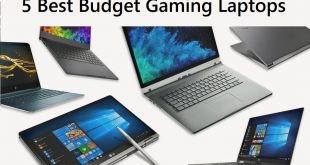So what’s different about Google’s latest laptop? Aside from losing the Chromebook title, the Pixelbook will be Google’s first stab at a 2-in-1 convertible Chromebook. It will be Google’s first stab at a 2-in-1 convertible with stylus support and will also allow users to install Android apps from the Google Play store.
What we covered?
Google Pixelbook: Specifications and release date
- 12.3in Quad HD 235ppi touchscreen
- Intel Core i5 or Intel Core i7 CPU
- 8GB or 16GB of RAM
- 128GB, 256GB or 512GB storage
- Stylus support via Pixelbook Pen (£99)
- Prices: Core i5, 8GB RAM – £999 (128GB); Core i5, 8GB RAM – £1,199 (256GB); Core i7, 16GB RAM – £1,699
- Release date: Pre-orders 4 October; Shipping from 31 October
Google Pixelbook UK release date: Key features and first impressions
The Google Pixelbook, unveiled on 4 October during the firm’s “Made by Google” event, is a truly lovely looking laptop. It’s a slim, sleek, high-end Chromebook, measuring 10mm thin, weighing a mere 1KG and built like a tank.
Its two-tone design echoes the design of the phones, complete with glass panel on the rear (which also is said to improve Wi-Fi performance), and a newly revamped “soft-touch” backlit keyboard and rubberised wristrest.
In keeping with this new, slick design, though, Google is setting its prices suitably high, with the most basic model costing £999 with 128GB of SSD storage and 8GB of RAM, rising to £1,699 with 512GB of SSD storage and 16GB of RAM.
Google clearly wants its new portable to be considered alongside “proper” laptops instead of the majority of Chromebooks, which tend to be budget models.
But, what does Google’s latest laptop offer that those cheaper Chromebooks don’t? The key development is that the Pixelbook is the firm’s first attempt at a premium 2-in-1 ultraportable.
That is, this Chrome OS-powered laptop does double duties as both a laptop and a tablet, thanks to the 360-degree hinge and 12.3in, Quad HD (2,400 x 1,600) 235ppi touchscreen display. That’s what makes it so different from 2015’s clamshell-designed Chromebook Pixel.
And what a gorgeous piece of hardware it is, too. The hinge is unobtrusive yet feels incredibly smooth and solid; the keyboard is very nice to type on and the rubbery wristrests feel absolutely lovely under your palms
That’s not all, though – the Pixelbook also benefits from added interactivity with stylus support through the Pixelbook Pen. Priced at £99, the Pixelbook Pen is pressure sensitive to 2,000 levels and has 60-degrees of tilt support, with Google building in support for it directly to Chrome OS. With the Pixelbook Pen, you’ll be able to circle items onscreen and Google Assistant will bring up “all the information you need” in a panel to the left side of the display.
There’s also native support for handwriting recognition, exactly as with Windows 10, and the stylus itself felt responsive and natural during the time we had with it at the launch event.
That’s not all, though, when it comes to Chrome OS updates, with Google also building in support for spoken and typed Google Assistant requests, plus a new feature the firm is calling Instant Tether, which will let you share your phone’s internet connection without having to set up a Wi-Fi hotspot.
The biggest development in Chrome OS for PixelBook, however, is set to be support for the Google Play Store, allowing you to install and use smartphone apps such as Adobe Lightroom. It remains to be seen how successfully those apps will adapt to the Pixelbook’s larger screen, though, and whether there will be compatibility issues. At the launch event I was shown an adapted version of Adobe Lightroom, which seemed to make the most of the extra screen real estate, and there’s a Pixelbook version of Snapchat, too, but I didn’t get the chance to try out anything else aside from Netflix.


